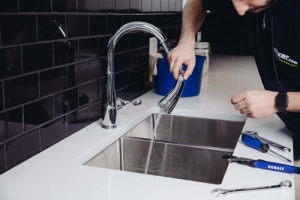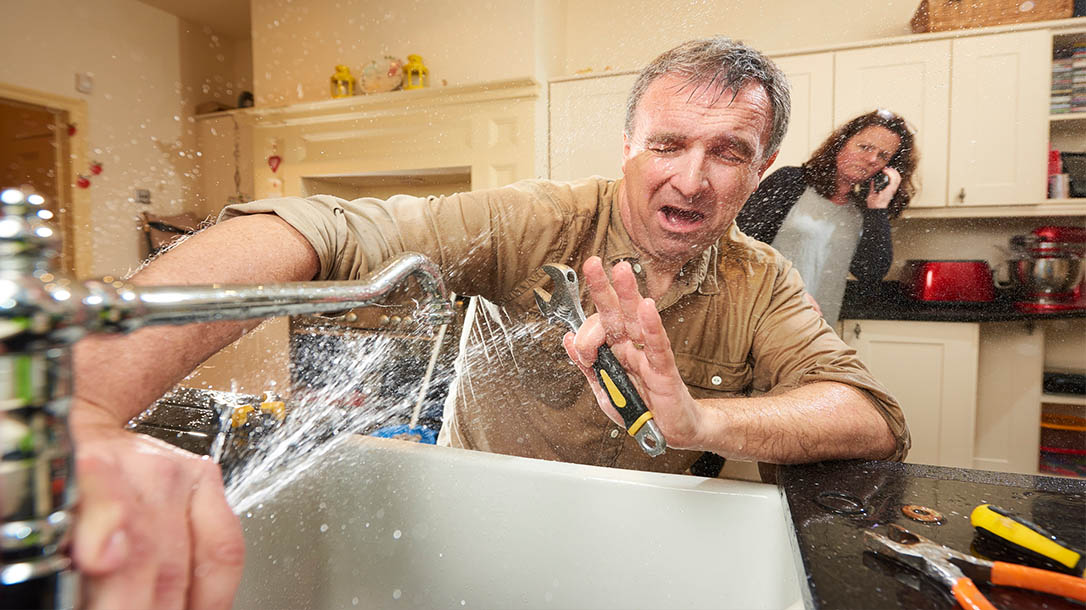The Causes Behind Correcting a Leaking Faucet
The Causes Behind Correcting a Leaking Faucet
Blog Article
How do you actually feel in regards to How to Fix a Dripping or Leaky Faucet ?

Leaking faucets could appear like a minor inconvenience, but their impact exceeds simply the annoyance of the audio. From wasting water to sustaining unnecessary financial prices and health and wellness risks, disregarding a trickling faucet can lead to various effects. In this write-up, we'll delve into why it's crucial to address this common home issue without delay and successfully.
Waste of Water
Environmental Impact
Leaking taps contribute dramatically to water wastefulness. According to the Epa (EPA), a solitary faucet leaking at one drip per secondly can waste more than 3,000 gallons of water per year. This not just stress water sources yet also influences environments and wildlife dependent on them.
Step-by-Step Guide to Fixing a Dripping Tap
Tools Needed
Prior to trying to take care of a trickling tap, gather the essential tools, including a flexible wrench, screwdrivers, substitute components (such as washing machines or cartridges), and plumber's tape.
Usual Faucet Issues and Their Solutions
Identify the kind of faucet and the specific concern causing the drip. Common troubles consist of damaged washers, rusty shutoff seats, or damaged O-rings. Refer to producer guidelines or on-line tutorials for detailed support on fixings.
Financial Expenses
Boosted Water Costs
Past the ecological influence, trickling taps can inflate water expenses considerably. The accumulated wastage over time translates right into greater utility expenditures, which might have been stayed clear of with timely repair services.
Possible Residential Or Commercial Property Damage
Additionally, long term trickling can cause damage to components and surface areas bordering the faucet. Water accumulation can create discoloration, corrosion, and also structural problems if left unattended, resulting in added repair work expenses.
Health and wellness Worries
Mold and Mold Growth
The continuous existence of wetness from a dripping tap produces an excellent setting for mold and mildew and mold development. These fungis not just jeopardize interior air high quality but also pose health risks, especially for individuals with respiratory conditions or allergic reactions.
Waterborne Diseases
Stationary water in dripping taps can come to be a breeding place for germs and various other pathogens, raising the threat of waterborne diseases. Pollutants such as Legionella germs prosper in stagnant water, potentially leading to significant diseases when consumed or inhaled.
Do it yourself vs. Expert Repair work
Benefits and drawbacks of DIY Repair Work
While some may attempt to fix a trickling faucet themselves, do it yourself fixings feature their own collection of obstacles. Without correct knowledge and tools, DIY attempts can aggravate the issue or result in insufficient repair work, lengthening the issue.
Benefits of Employing a Specialist Plumber
Working with a professional plumber makes sure that the underlying source of the dripping faucet is attended to properly. Plumbings possess the experience and tools to diagnose and fix faucet problems successfully, saving time and lessening the threat of additional damages.
Ecological Duty
Specific Payment to Conservation
Taking duty for fixing leaking faucets aligns with more comprehensive efforts toward water conservation and ecological sustainability. Every individual's actions collectively make a significant influence on protecting valuable resources.
Sustainable Living Practices
By focusing on punctual fixings and taking on water-saving behaviors, individuals contribute to lasting living methods that benefit both present and future generations.
Preventive Measures
Regular Upkeep Tips
To stop dripping taps, execute routine maintenance such as cleansing aerators, checking for leaks, and changing damaged components promptly. In addition, think about installing water-saving tools or upgrading to extra effective fixtures.
Value of Prompt Repairs
Resolving leaking taps as quickly as they're observed prevents additional water wastage and prospective damages, ultimately conserving both water and cash in the long run.
Effect On Residential Property Value
Understanding of Well-Maintained Property
Maintaining a residential or commercial property in good condition, consisting of addressing upkeep problems like leaking faucets, improves its viewed value and value amongst prospective customers or lessees.
Impact on Resale Worth
Qualities with well-kept plumbing fixtures, consisting of faucets, command greater resale values in the property market. Addressing leaking taps can contribute to a positive impact during building assessments and arrangements.
Verdict
Addressing a leaking tap goes beyond simple comfort; it's an essential step toward conserving water, decreasing monetary prices, and securing wellness and building. Whether via do it yourself repairs or expert help, doing something about it to deal with dripping faucets is a little yet impactful method to promote accountable stewardship of sources and add to a healthier, much more sustainable future.
How to Fix a Leaky Faucet: Step-by-Step Repair Guide
A leaky faucet may seem like a simple annoyance, but if it's not fixed promptly, that leak could cost hundreds to potentially thousands. From water damage to mold, mildew, and high water bills, even a tiny leak can be catastrophic if left unattended. Damage like this can even affect the overall value of your home, so it's important to take the right approach for leaky faucet repair. You may need the help of a plumber in some cases, but we've got a few tips you can try on how to fix a leaky faucet before calling the pros.
Four Faucet Types
When you're learning how to fix a leaky faucet, the first step is knowing what kind of faucet you're working with! There are four common types.
Cartridge Faucets
Cartridge faucets come in one- or two-handled varieties. In one-handled cartridge faucets, hot and cold water combines in a single cartridge. In the two-handled versions, hot and cold water are controlled separately and mixed in the faucet.
Ball Faucets
Ball faucets have a single lever you push up and down to adjust the pressure and rotate to change the temperature. A slotted metal ball controls the amount of water allowed into the spout.
Compression Washer Faucets
They're the oldest type of faucet, but they're still used in many homes — especially older ones. Compression faucets have two separate handles that, when turned, raise or lower the washer that seals a water valve. This valve stops water from flowing through the faucet when it is turned off.
Disc Faucets
Disc faucets rarely need to be repaired due to their maintenance-free design. The water flow is controlled by two discs — the upper one raises and lowers against a fixed lower disc, creating a watertight seal. If your disc faucet starts leaking, you may need to replace the seals or clean residue buildup from the inlets.
Fixing a Leaky Faucet
Step 1: Turn Off the Water
Whether you're learning how to fix a leaky bathtub faucet or how to fix a leaky kitchen faucet, always turn off the water supply to your working area when you're fixing a leak. The last thing you want is a flood added to your list of things to fix.
Look for the shutoff valves below your sink or around the tub and turn them clockwise to stop the water flow. If your faucet doesn't have shutoff valves, you may need to turn off the water for the whole house. Check to make sure it's off by turning the faucet on. If nothing comes out, you're ready to start the repair.
Step 2: Take Apart the Faucet
How you disassemble your faucet depends on the type of fixture you have. You can use a flathead screwdriver to remove the caps on top of the handle or handles for cartridge and compression faucets. Inside, you should see handle screws. Unscrew these with a screwdriver to remove the handle.
Disc- and ball-style faucets will typically have an inlet screw near the handle, and removing that will reveal the interior of the faucet.
Detach the Valve Stem
For cartridge- and compression-style faucets, you'll see the inner valve stem or cartridge once you remove the faucet handles. If you have a compression faucet, unscrew the brass valve stem. If you have a cartridge faucet, pull out the cartridge. If your cartridge has been in place for a while, it may require some tools or extra force to remove it due to mineral deposits.
Examine and Replace Parts
Once you've removed the parts, check them out to confirm what needs to be replaced. You may see corroded rubber washers, O-rings, stems, or cartridges. On a ball-style faucet, check the seats and springs for damage.
If you need to repair a leaky disc faucet, check the inlet and seals on the lower disc.
Once you determine what parts must be replaced, visit your local hardware store. Bring the damaged parts with you to ensure you can purchase the correct components to replace them.
Clean Valves and Faucet Cavity
If you've removed a stem or cartridge, you may notice mineral buildup in the faucet's threads. Use white vinegar to clean the valve seat by soaking it for a few minutes, then scrub it away with a soft toothbrush and rinse with warm water. You can also clean the interior of the faucet in the same way.
Reassemble the Faucet
Once your faucet is cleaned and the required parts have been replaced, it's time to reassemble it. Put the pieces back together and slowly turn the water supply back on. Doing this slowly is crucial because too much initial water pressure can damage the new hardware you've just installed.
https://homewarranty.firstam.com/blog/how-to-fix-leaky-faucet

Do you like reading up on How to Fix a Dripping or Leaky Faucet ? Put feedback down the page. We will be glad to hear your suggestions about this blog post. In hopes that you come back again later on. Appreciated our blog posting? Please quickly share it. Let someone else discover it. Thanks so much for taking the time to read it.
Report this page